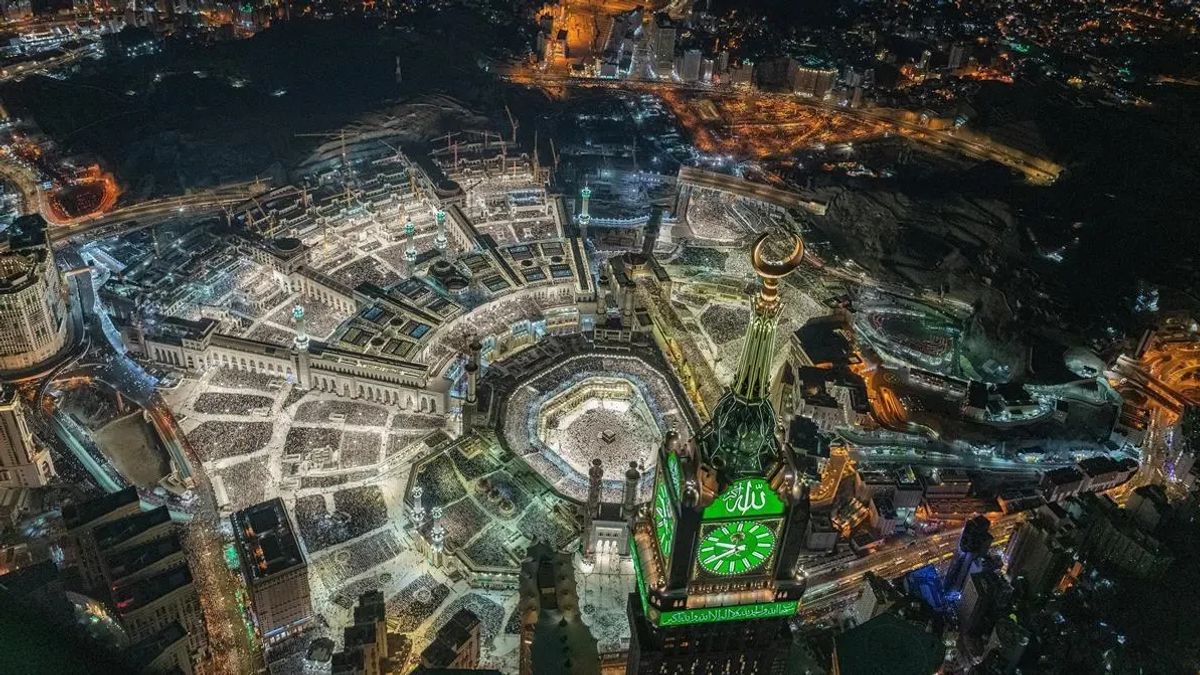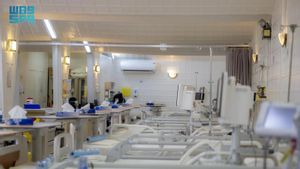JAKARTA - The Saudi Arabian authorities take advantage of various modern technologies, ranging from artificial intelligence (AI) to drones to provide comfort and smooth running of pilgrims to carry out a series of Hajj season services this year.
To reduce congestion in Makkah and traffic management, Saudi Arabian authorities use AI such as real-time traffic monitoring and adaptive signal control systems, to smooth the flow of vehicles and pedestrians, reduce congestion, and ensure smoother movement across cities.
Security spokeswoman for the Ministry of Home Affairs Colonel Talal bin Abdulmohsen Al-Shalhoub said there are several new AI applications for this Hajj season, including a new algorithm for surveillance cameras to analyze the number of vehicles on city streets.
"We have supplied advanced digital equipment for data, artificial intelligence and cutting-edge technology to assist field officers and combine AI into operational systems," Colonel Al-Shalhoub said.
"We are utilizing AI technology to improve traffic control in Makkah by utilizing collaboration between Civil Defense and the Saudi Data and AI Authority," he explained.
He explained that this partnership will offer digital solutions to assist security personnel in monitoring and analyzing data during Hajj operations.
"This cooperation between authorities allows us to build an integrated state-of-the-art technology system during this year's Hajj season, where the operation center is equipped with a smart platform built with a national artificial intelligence algorithm to serve pilgrims during the Hajj ritual," Colonel Al-Shalhoub explained.
Meanwhile, the Minister of Transportation and Logistics of the Saleh Al-Jasser Kingdom recently announced the launch of a new technology designed to regulate traffic during this year's hajj, including the use of drones for inspection and evaluation of road networks using thermal scanning.
Meanwhile, the use of the Virtual Glasses Initiative revolutionizes transportation monitoring, complementing field monitors with added reality glasses to monitor activities and ensure compliance.
With a target to cut inspection times by 600 percent, from 60 seconds to just 10 seconds, it is hoped that this innovative technology will streamline operations and increase efficiency significantly.
"Cameras, advanced data smart systems and dashboards, such as the Sawaher platform, offer advanced services to identify and analyze the flow of vehicles and worshipers, as well as to detect violations in various areas," said Colonel Al-Shalhoub.
By improving the quality of monitoring and reducing congestion, this can provide a smoother transportation experience for passengers.
Separately, the Ministry of Health will use drones to transport blood and laboratory samples quickly and efficiently between hospitals around the holy site, to help reduce waiting times for transfusions and test results.
Compared to existing road delivery systems, drones will reduce the time it takes to transport blood from an average of two and a half hours to just two minutes.
Meanwhile, the Public Transportation Authority has also launched the Enseeyab initiative, which was first introduced during the 2023 Hajj season, using drones connected to the AI program to measure the movement of worshipers to a real-time holy place by bus.
The authority aims to provide safe travel facilities using new technologies, including AI, to measure their effectiveness. This technology will ensure pilgrims can perform rituals comfortably and easily.
Another way that the authorities will do to manage traffic jams during Hajj is through micro mobility options, such as electric scooters, which will be available in holy places to facilitate movement.
By providing a dedicated lane for these electric scooters, planners have allowed pilgrims to travel more efficiently and reduce overall congestion in high traffic areas.
SEE ALSO:
Some of the main routes that can benefit from the use of electric scooters include Route No. 1 from Arafah to the Muzdalifah border, which is 4.000 meters long, and the 1,200 m long pedestrian road bridge that goes in and out of Jamarat.
It is known, this technology-based solution reflects Saudi Arabia's commitment to using innovation to optimize the Hajj experience for all pilgrims.
The Directorate General of Saudi Arabian Passports confirmed that as of Tuesday, 1,547,295 pilgrims had arrived in the country. Authorities said 1,483,312 pilgrims entered Saudi Arabia via airports, while the rest arrived by land and sea.
The English, Chinese, Japanese, Arabic, and French versions are automatically generated by the AI. So there may still be inaccuracies in translating, please always see Indonesian as our main language. (system supported by DigitalSiber.id)


















